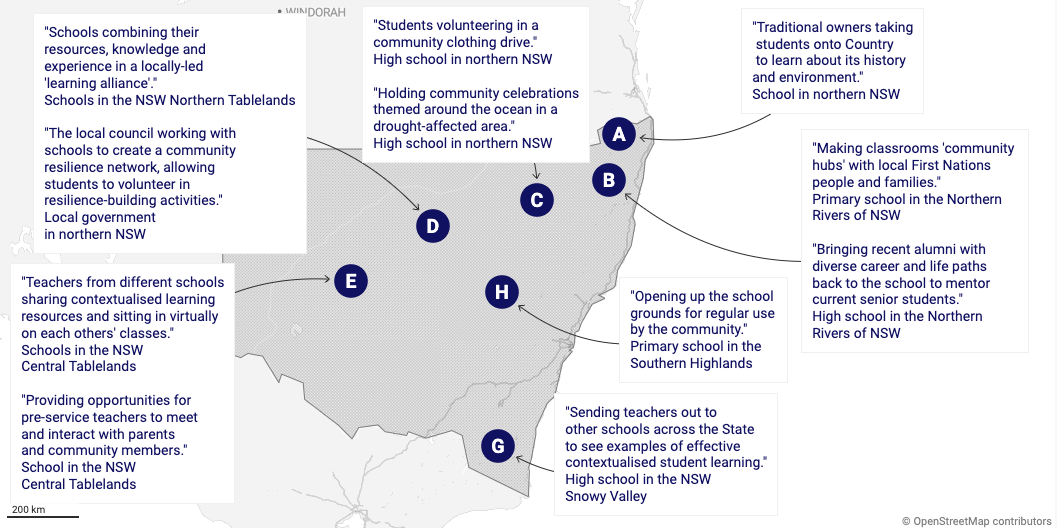Executive Summary
In recent years, schools in regional, rural and remote NSW have been affected by floods, drought, bushfires, animal plagues, and other major disruptions, including COVID-19.
In the face of this, they have overwhelmingly demonstrated strength and adaptability. About two-fifths of NSW schools are in regional, rural and remote areas.
This is what we call resilience: the ability to draw on resources and supports to withstand and manage what school communities are presented with and to develop strength and recovery going forward. Yet resilience is not just about managing disasters. It is about school communities being strong and able to deal with whatever is presented. When a school is resilient, so is the local community–and vice versa. The NSW Department of Education has long recognised the unique needs and contexts of these schools (as distinct from metropolitan ones), reflected in the creation of the Regional, Rural and Remote Education Unit and targeted strategies, such as the Rural and Remote Education Strategy (2021-2024).
This report focuses on two ways to boost the resilience of regional, rural and remote school communities:
- improving links between schools and their local communities; and
- opportunities for contextualised student learning and professional learning of school staff.
School communities with strong social capital and high levels of contextualised student and staff learning are positioned well to endure and recover from a disruption. At their most effective, schools provide support, safety and continuity in times of disaster and recovery; empower communities to participate and look towards the future with confidence; encourage community health and wellbeing; and facilitate connections between the school and community groups, organisations and leaders. This creates the personal capabilities and social infrastructure to respond to present and future shocks.
This report is not intended as a comprehensive strategy; rather, we hope that the ideas which follow inform discussions about education policy and practice to boost resilience through local links and learning. The analysis and identified opportunities for policy and practice are based on desktop research, consultations and workshops involving more than 50 people, including academic experts, school principals, local councils, public servants, and service providers across NSW, Australia and internationally.
This report identifies opportunities in four policy focus areas to boost school and community resilience through local community links and learning.
We have found that focussing on these policy areas can help school communities to build up and nurture the social, logistical, resource and knowledge supports that are required for them to contend with future disruptions, thereby strengthening their overall resilience.
These policy focus areas are interdependent and mutually-reinforcing. We believe that to shift the dial on the resilience of regional, rural and remote school communities, these areas should be progressed together to foster community ties and leverage learning and skills.
Building on this report, further research and policymaking should aim to develop specific and tailored approaches with respect to First Nations people and communities and culturally and linguistically diverse (CALD) groups, recognising their unique circumstances, interests and needs in building resilience.
Opportunities
The following are policy and practice opportunities that have been identified through this collaborative project:
Note: a more detailed explanation of these opportunities is set out in Appendix 1.
Resilience in action
Regional, rural and remote school communities are already leading efforts to boost their own resilience through effective, locally led initiatives. Throughout the research for this report, we encountered many examples of school communities boosting their resilience through community ties and leveraging learning and skills. The map below captures examples of “resilience in action” that we heard from school and community leaders from across NSW.








